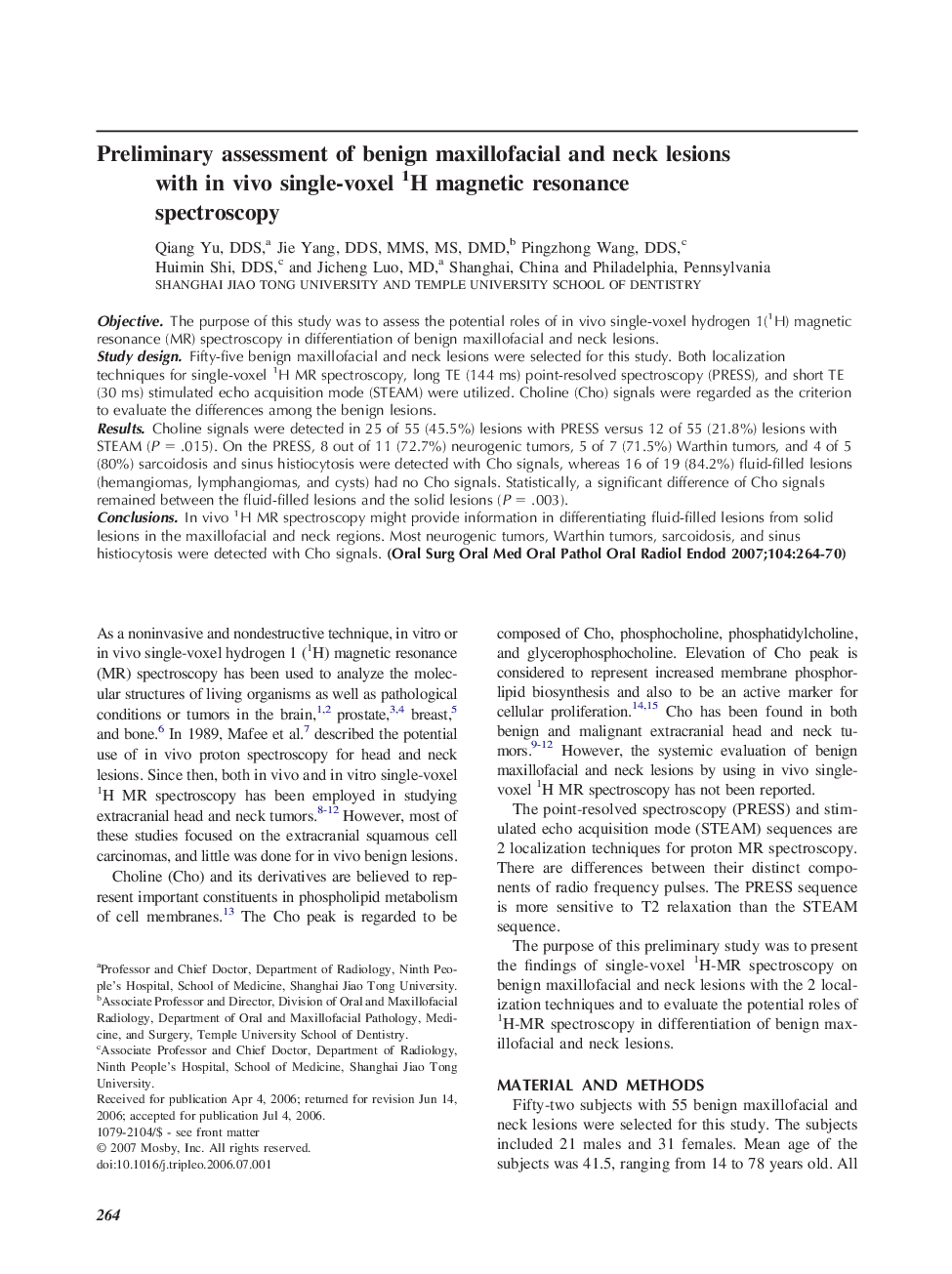| Article ID | Journal | Published Year | Pages | File Type |
|---|---|---|---|---|
| 3169133 | Oral Surgery, Oral Medicine, Oral Pathology, Oral Radiology, and Endodontology | 2007 | 7 Pages |
ObjectiveThe purpose of this study was to assess the potential roles of in vivo single-voxel hydrogen 1(1H) magnetic resonance (MR) spectroscopy in differentiation of benign maxillofacial and neck lesions.Study designFifty-five benign maxillofacial and neck lesions were selected for this study. Both localization techniques for single-voxel 1H MR spectroscopy, long TE (144 ms) point-resolved spectroscopy (PRESS), and short TE (30 ms) stimulated echo acquisition mode (STEAM) were utilized. Choline (Cho) signals were regarded as the criterion to evaluate the differences among the benign lesions.ResultsCholine signals were detected in 25 of 55 (45.5%) lesions with PRESS versus 12 of 55 (21.8%) lesions with STEAM (P = .015). On the PRESS, 8 out of 11 (72.7%) neurogenic tumors, 5 of 7 (71.5%) Warthin tumors, and 4 of 5 (80%) sarcoidosis and sinus histiocytosis were detected with Cho signals, whereas 16 of 19 (84.2%) fluid-filled lesions (hemangiomas, lymphangiomas, and cysts) had no Cho signals. Statistically, a significant difference of Cho signals remained between the fluid-filled lesions and the solid lesions (P = .003).ConclusionsIn vivo 1H MR spectroscopy might provide information in differentiating fluid-filled lesions from solid lesions in the maxillofacial and neck regions. Most neurogenic tumors, Warthin tumors, sarcoidosis, and sinus histiocytosis were detected with Cho signals.
